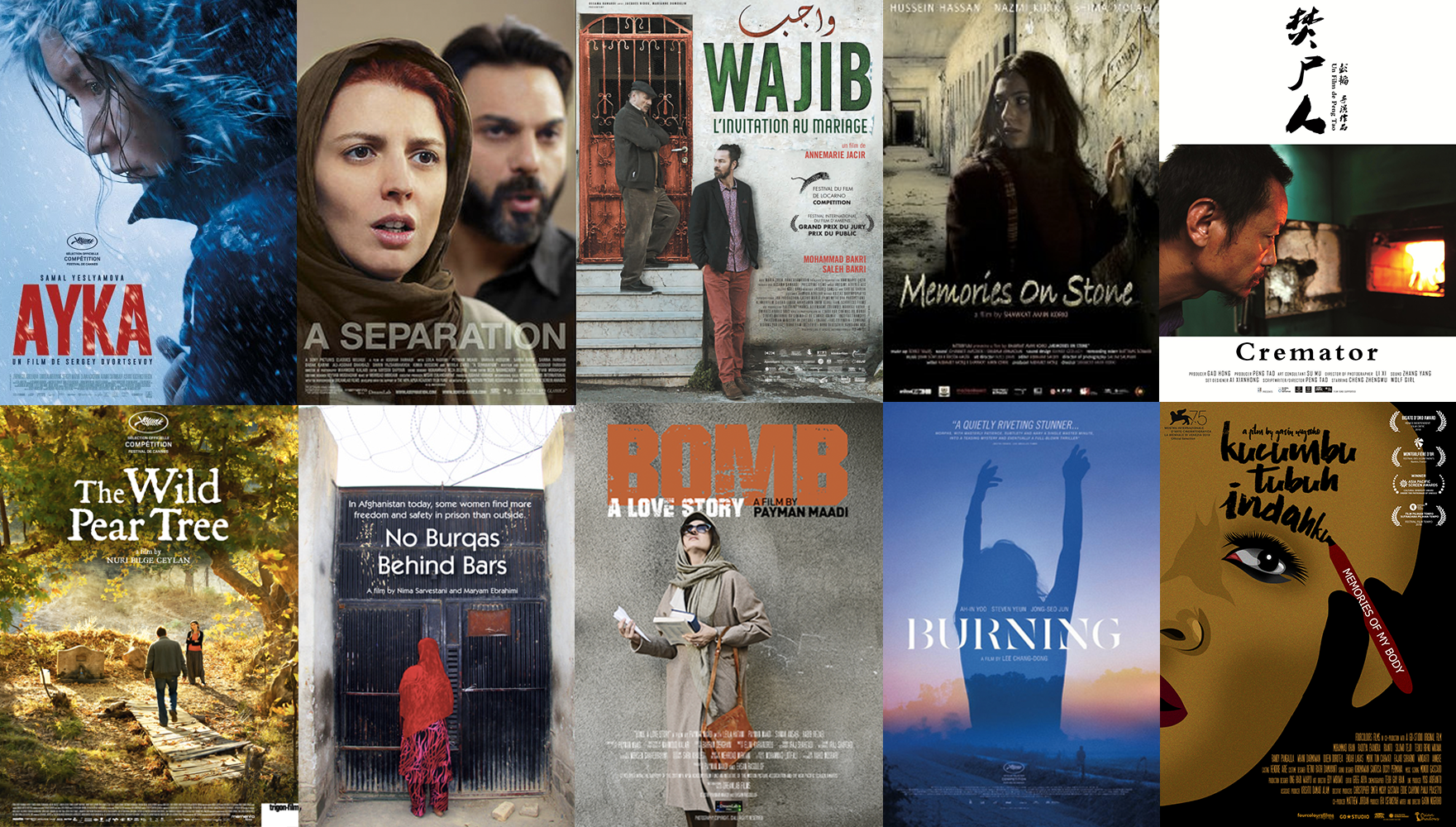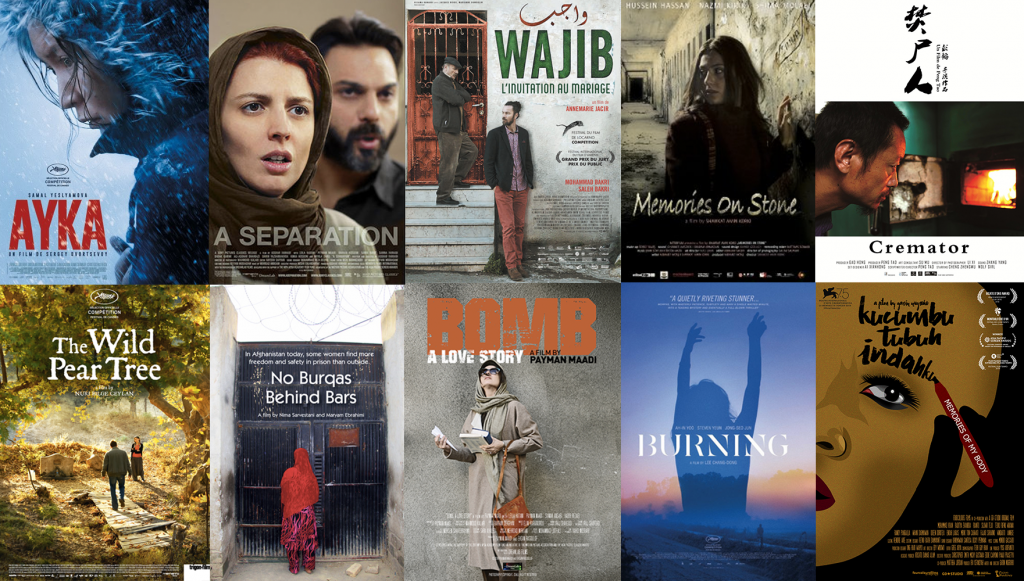APSA Script Plan Over Ten Years
Created in 2010 by the Motion Picture Association and the Brisbane-based Asia Pacific Screen Academy, the MPA APSA Academy Film Fund is celebrating its 10th anniversary after awarding a total of US$1 million in 40 grants to support the development of film production projects across the Asia Pacific region.
While there are many development funds, this one is exceptional. The fund was established to promote outstanding cinema across a vast region – with very few prescriptions of what films might qualify. The details have always been left to each year’s assessment panel. From the beginning, the panel has taken an approach that supported the idea of bold, exciting, sensitive cinema, whether drama, documentary or animation, regardless of commercial outcomes.
The fund has never asked for marketing plans, finance plans or distributor attachments. In fact if a project comes to the fund with a lot of money already in the kitty and there are plans for major commercial involvement, it is more than likely that the assessors will give preference to other less well-endowed projects where the grants may make a greater difference.
Each year the fund awards four US$25,000 grants with no strings attached and no production monitoring other than evidence that work is in progress.
I came in as the panel chair in the first year and ever since have been invited to continue in that position. Over the years there have been, apart from me, 20 panellists with varying connections to cinema – producers, directors, writers, actors, distributors, film festival directors – from India, China, South Korea, Indonesia,New Zealand, and Australia.
In making our decisions, we call for a treatment (a maximum of six pages, not a script), plus a form containing factual information and a personal statement from the applicant. The applicant must be a key member of the creative team and a member of the Asia Pacific Screen Academy. To become a member of the Academy, the applicant needs to have been associated with a film that has reached the finals of the annual APSA Awards.
Given the requirement to be a member of the Academy, applicants have tended to be among the elite filmmakers from across the Asia Pacific region, with high-level track records. So, we have always had the privilege of considering applications from experienced filmmakers, whether veterans or those in the early stages of their careers.
Many applicants come from countries or regions where there is minimal infrastructure to support an independent filmmaker, either financially or with facilities. Many applicants have no local peer group support, are vulnerable to censorship and other forms of government control, and have minimal marketing or exhibition potential in their own country.
Money is always welcome, but just as important can be recognition and endorsement from outside a filmmaker’s own region, especially when it comes with networking possibilities with peers in other countries through their membership of the APSA Academy.
It does not matter how polished an application may be. In the first year, the panel was unanimous in supporting an Iranian feature that had a roughly-typed, unformatted page and a half of an outline – but we were all moved and excited by the few paragraphs that we were offered.
Our grant helped to get the film over the line and it went into production, won the Golden Bear in Berlin and dozens of other awards, including an Oscar for Best Foreign Language film. It was of course, A Separation, and it triggered a significant international career for the director Asghar Farhadi. It has always thrilled me that in the end credits of that film, all in Persian script, there is a single title card in English acknowledging the Asia Pacific Screen Academy and the Film Fund.
Risk-taking filmmakers need film funds like ours to survive and flourish. For example, Maryam Ebrahimi made No Burqas Behind Bars, a feature-length documentary filmed inside a women’s prison in Afghanistan, which won an International Emmy award and the Prix Europa, both for best documentary.
Haifaa Al Mansour, the first female feature filmmaker in Saudi Arabia, made her debut withWadjda, the story of a 10-year-old girl growing up in the suburbs of Riyadh, who dreams of owning and riding a green bicycle. She received a grant from the fund for the development of an animated feature Miss Camel. Panah Panahi, son of Jafar Panahi, an Iranian filmmaker who was banned from making films in Iran, was awarded a grant for Flower, a feature drama about mental disability.
One favourite film of mine, Memories on Stone, was a very black comedy from Iraqi Kurdistan, shot some 200 km from ISIS-controlled territory, about the impossibility of trying to make a film under conditions of government regulation, extreme social and religious restrictions, and nowhere to screen the film in its own territory when it was finished.
The filmmaker, Shawkat Amin Korki, secured backing in Germany, received wide international distribution and won a slate of awards. Shawkat was invited to screen his film at the Washington DC headquarters of the MPAA. He made the trip after having to travel through ISIS-held country to secure his US visa.
For APSA and the MPA, the fund has always been about the communication of ideas and experiences, creating new possibilities in the cinema and about enriching the screen culture of the world with innovation and non-formulaic creativity. It has never been an “industry” fund but rather a facilitator for filmmakers willing to push at any boundaries, creative or otherwise, that may constrain them.
The voices supported through the fund represent a broad range of backgrounds, allowing a wide diversity of screen stories to be told. Around
50% of grants from the fund have gone to films that have been completed or are in active production, from Indonesia, Thailand, South Korea, Russia, Turkey, China, Iran, Iraq, Palestine, Israel, the Marshall Islands, Bangladesh, Georgia and Kazakhstan, as well as Australia and New Zealand. It’s a very high strike rate for any development fund, and given the large number of awards that have been garnered thus far, a highly successful activity for both the MPA and APSA.
The fund has provided additional value in that it builds a network of leading filmmakers who are engaged with the development and growth of their local and regional film industry, and who often work closely with the MPA and APSA to build awareness for important issues such as intellectual property rights and creative expression.

Poster artwork from completed films developed with the support of the MPA APSA Academy Film Fund
By the end of its 10th year, the fund will have supported 40 productions and their teams. Each completed film has the potential to reach vast audiences, both locally and internationally. It is a success story of creative empowerment and cultural enrichment with a long-term legacy for generations to come.
Andrew Pike, OAM, is a film distributor, film historian and documentary film-maker. With Ross Cooper, he co-authored the history, Australian Film 1900-1977 (Oxford University Press). His company Ronin Films has distributed many Australian features and documentaries, as well as films from China and Japan. In 2009 he began an on-going association with the Asia Pacific Screen Academy, initially as a jury member in its annual Awards. From 2010 to the present he serves as chair of the MPA APSA Film Fund.
This article was first published here.

